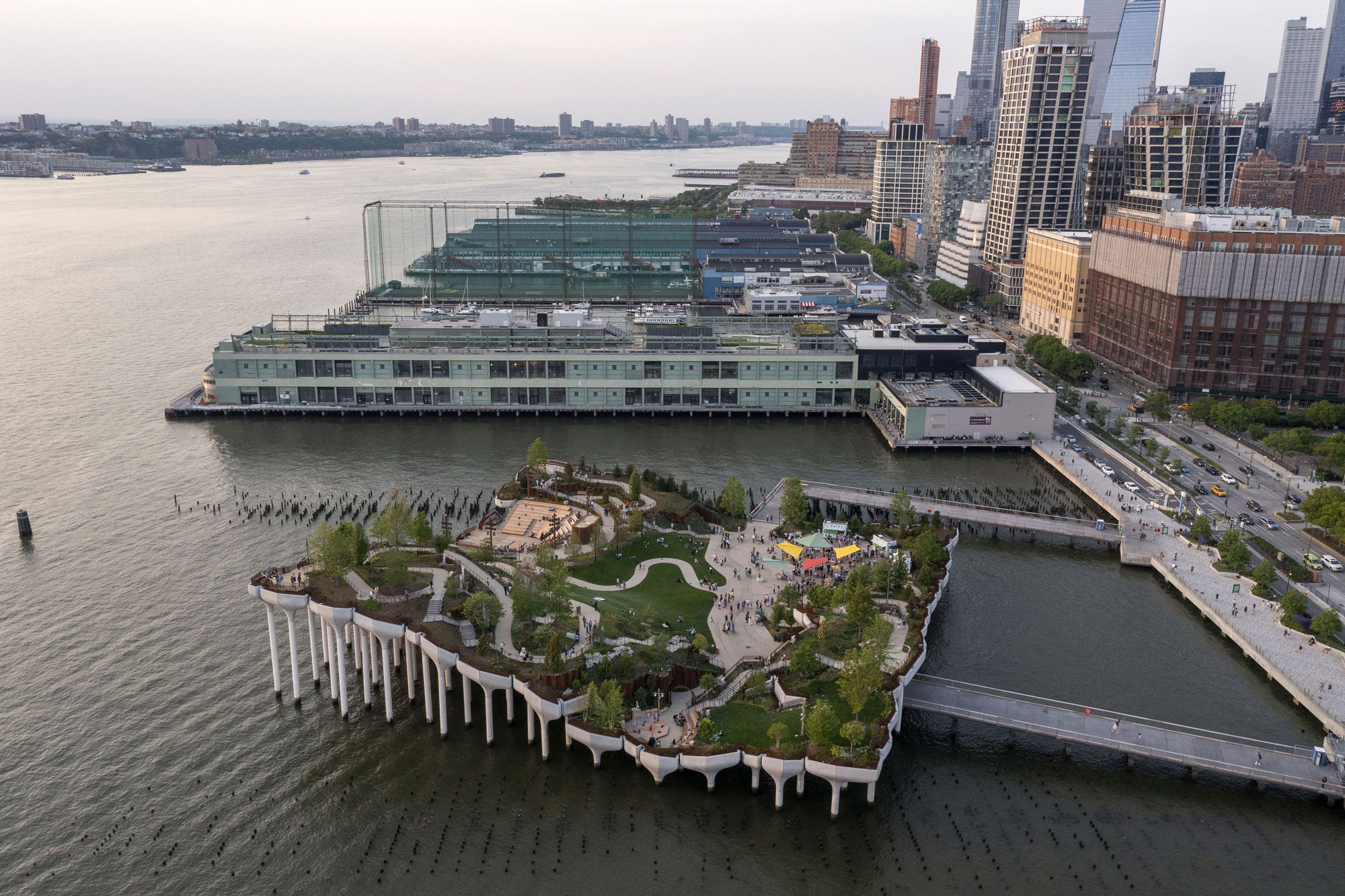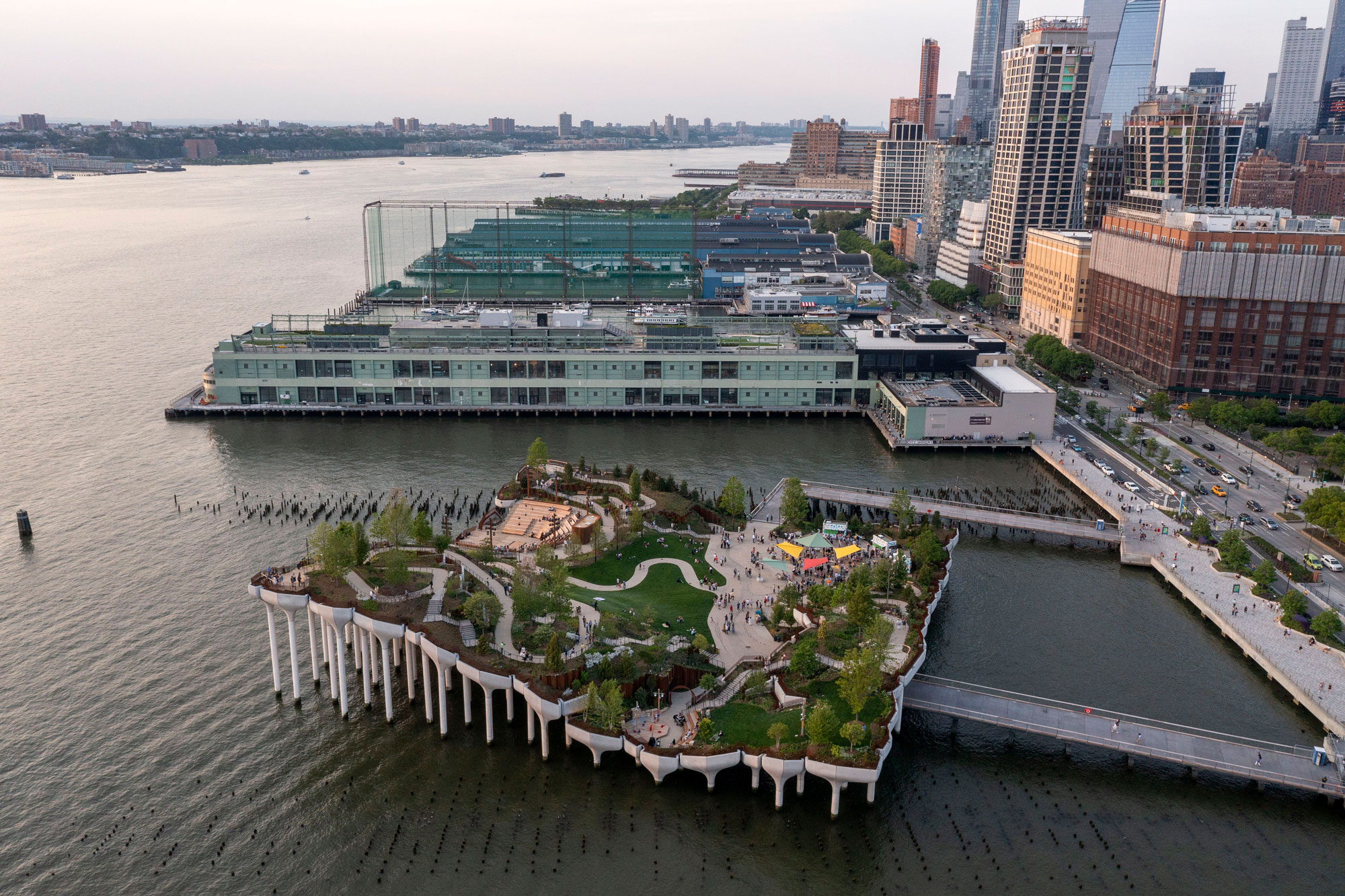

Little Island, the new 2.4-acre urban park and performance venue situated above the Hudson River in New York City officially opens to the public today. Owned by the Hudson River Park and designed by Heatherwick Studio and the New York-based landscape architecture firm MNLA, the opening of Little Island is the culmination of over 8 years of planning, development and construction.
The park will provide New Yorkers and visitors from around the world with a unique green space unlike any other in New York City. Heatherwick Studio were the lead designers for the project, developing the idea from the initial concept through to the pier’s public opening. We were responsible for the overall design, from the form, topography and landscape through to the interior spaces, materiality, furniture and details.
Thomas Heatherwick, Founder of Heatherwick Studio said:
“The project began when we were asked to conceive of a sculptural structure to go on a design for a newly enlarged piece of the Hudson River Park promenade. The project was interesting, but we saw the opportunity to create a more engaging experience for New Yorkers and to build on the city’s heritage of inventing exciting new public spaces. Instead, we had the idea to make an entirely new type of pier as a lush rectangular garden island, connected to the land with generous gang-planks as bridges, aligned to the street grid of New York.
As well as making multiple spaces for different activities and performances, this new public space could also take advantage of the water to create a more meaningful threshold that allows visitors to feel they’re having a break from the hecticness of the city.
Typically pier structures are always flat, but we saw this as an unmissable opportunity to lift the surface to create a topography that would make a more dynamic social experience for visitors and give great sightlines for performing spaces and lookout points over the river and back towards the city. Also, typically, piers are composed of structural piles that go down into the river bed with slabs that cover them to make a surface. However, we were inspired by these piles and the civil engineering required to build structures that are able to withstand extreme river conditions. Could we make these the heroes of our project, rather than hiding them?
The vision that’s been built is based on taking these piles and turning their tops into dramatic planters that fuse together to make a richly-planted undulating landscape.
Our intention has been to make an exciting space that is free for everybody to come to, that treats the river as part of nature as well as plants and even each other.”
Press kit and images available here.